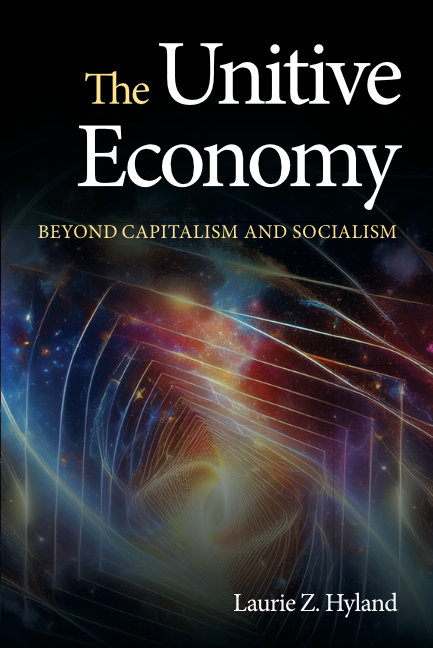“WHAT CHANGES WOULD BE REQUIRED TO MAKE THIS…UNMISTAKABLY CAPITALIST COUNTRY INTO A ‘SOCIALIZED’ ONE – THAT IS NEITHER CAPITALIST OR SOCIALIST, WITH ACTIVE MARKET…. SECTORS AND A CULTURE OF SOCIAL CONCERN?”
—Robert L. Heilbroner, William Milberg
The Unitive Economy Beyond Capitalism and Socialism

The Unitive Economy is supported by three pillars:
1) Adopting the view of entanglement or the proven fact that everything and everyone is connected or what I am calling the Oneness Worldview.
2) Changing the Gross National Product (GDP) to the Gross Satisfaction Index (GSI). This, then, would include not just material success, but satisfaction with all facets of life.
3) Acknowledging that we are now in dire need of what Stephanie Kelton’s calls, “The Birth of the People’s Economy.” She uses Modern Monetary Theory to show us that in almost all instances federal deficits are good for the economy.
These three pillars summarize the book, or more importantly, can act as guidelines for our economic future
In chapters I and II, The Unitive Economy begins by detailing the pros and cons of both capitalism and socialism.
For example:
Capitalism:
Pro: Entrepreneurship
Con: Inequality
Socialism:
Pro: Commitment to an Equalitarian Society
Con: High Taxes
Chapter III discusses humanity’s rise in levels of consciousness from several viewpoints. The prevailing level of consciousness is critical to our economic beliefs and principles.
Chapter IV then compares the belief systems that have been in place for over 400 years, with the new level of consciousness now emerging; the consciousness which knows the connection of everything on our planet.
Chapter V brings all the chapters together and envisions the new economic principles, thus named, The Unitive Economy.
